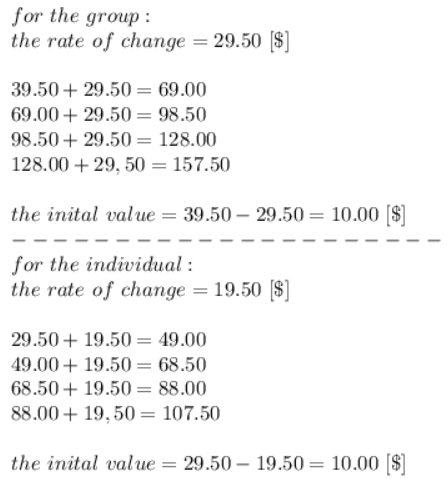got completely lost in this shit help please
Ok ty all for your help I can finally get my beautiful 2 hours of sleep. gn.
got completely lost in this shit help please
Ok ty all for your help I can finally get my beautiful 2 hours of sleep. gn.
I wish I bothered remembering math.
Thinking about giving a headless head for whoever can give me these answers.
Although I think I can do this… I don’t think its a good idea for me to give out the answers… : /
Then again, I gotta go to sleep…
aight. gn
i wish i coud help
but i haven’t even learned this stuff yet
First image answer for the number 2 is
Y = [-6] [-1] [2] [3] [2]
ay yo bro ty
lemme help with the other one brb

last page number 3, this is A and B
im good at understanding math but bad at explaining it
but i’ll try
i’ll edit this as i go
for second page, both tables are proportional, seeing as its linear (i think)
ty bro saved me
ty fam yall saving me
third page
just read the passages .-.
Last page number 1 B answer is:
cost = 0.5 (45) + $120.00
cost = $22.50 + $120.00
cost = $142.50 since this is split three ways
cost per person = $142.50/3 = $47.50
oh shit didn’t realize 3rd page was just reading
hold on
its been awhile since i learned this lmao
on second page, 2nd problem isn’t proportional apparently, the ratio isn’t the same
what is math
Mathematics (from Greek: μάθημα, máthēma , ‘knowledge, study, learning’) includes the study of such topics as quantity (number theory),[1] structure (algebra),[2] space (geometry),[1] and change (mathematical analysis).[3][4][5] It has no generally accepted definition.[6][7]
Mathematicians seek and use patterns[8][9] to formulate new conjectures; they resolve the truth or falsity of such by mathematical proof. When mathematical structures are good models of real phenomena, mathematical reasoning can be used to provide insight or predictions about nature. Through the use of abstraction and logic, mathematics developed from counting, calculation, measurement, and the systematic study of the shapes and motions of physical objects. Practical mathematics has been a human activity from as far back as written records exist. The research required to solve mathematical problems can take years or even centuries of sustained inquiry.
Rigorous arguments first appeared in Greek mathematics, most notably in Euclid’s Elements .[10] Since the pioneering work of Giuseppe Peano (1858–1932), David Hilbert (1862–1943), and others on axiomatic systems in the late 19th century, it has become customary to view mathematical research as establishing truth by rigorous deduction from appropriately chosen axioms and definitions. Mathematics developed at a relatively slow pace until the Renaissance, when mathematical innovations interacting with new scientific discoveries led to a rapid increase in the rate of mathematical discovery that has continued to the present day.[11]
Mathematics is essential in many fields, including natural science, engineering, medicine, finance, and the social sciences. Applied mathematics has led to entirely new mathematical disciplines, such as statistics and game theory. Mathematicians engage in pure mathematics (mathematics for its own sake) without having any application in mind, but practical applications for what began as pure mathematics are often discovered later.[12][13]
cool